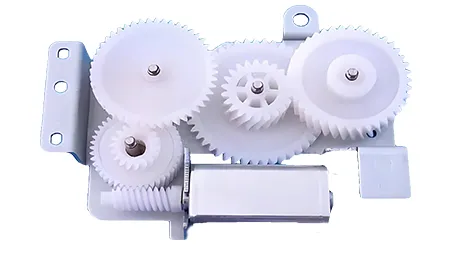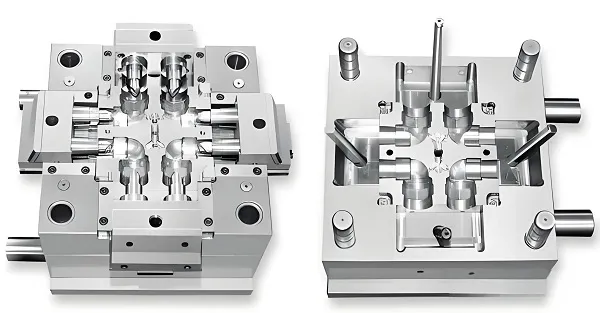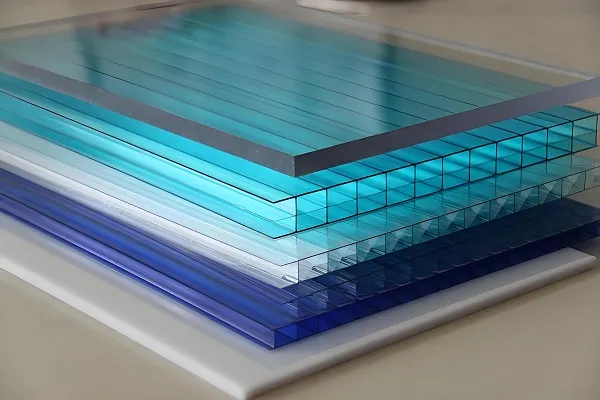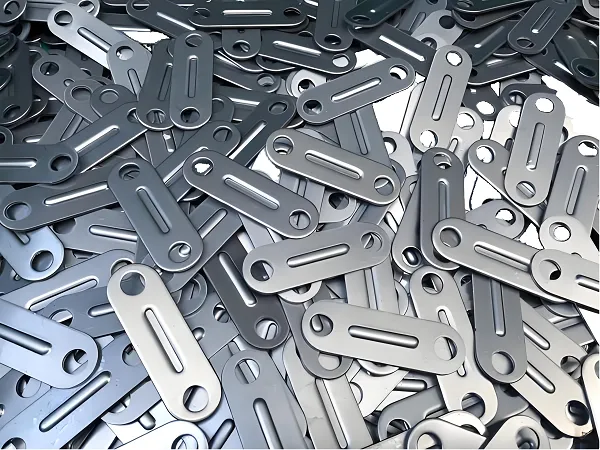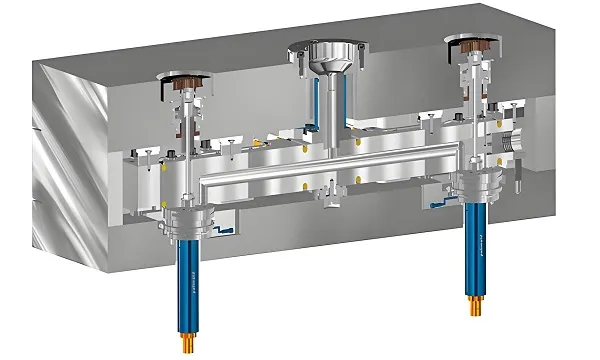In the rapid development of modern manufacturing, precision – machined components have become the core foundation of numerous industries, especially in the aerospace field where extremely high requirements for precision and reliability are imposed. As a procurement decision – maker, having an in – depth understanding of knowledge related to precision – machined components is crucial for making correct procurement decisions, ensuring product quality, and smoothly advancing projects.

I. Overview of Precision – Machined Components
1.1 Definition and Importance of Precision Machining
Precision machining refers to the process of processing raw materials into components with extremely high standards in dimensional accuracy, shape accuracy, and surface quality, using high – precision machine tools and advanced processing techniques under strictly controlled environmental conditions. In the aerospace field, the quality of precision – machined components directly determines the performance, safety, and reliability of aircraft. A tiny machining error can lead to serious consequences in extreme environments. Therefore, the importance of precision machining is self – evident.
1.2 Technical Characteristics of Precision Machining
Precision machining is characterized by high precision, high surface quality, and high automation. Its dimensional accuracy can usually reach the micron or even nanometer level, and the surface roughness can be controlled within a very small range, meeting the complex and stringent design requirements of aerospace components. At the same time, with the help of advanced automated equipment and control systems, precision machining can achieve stable and efficient production, ensuring the consistency of components and mass – production capabilities.
1.3 Development Trends of Precision Machining
With the continuous progress of science and technology, precision machining is developing towards higher precision, intelligence, and greenness. On the one hand, nanoscale machining technology and ultra – precision machining technology are constantly breaking through, pushing the machining precision to a new height. On the other hand, technologies such as artificial intelligence and big data are deeply integrated with precision machining, realizing intelligent monitoring, optimization, and control of the machining process. In addition, the enhanced awareness of environmental protection has led to more widespread application of green machining processes and recyclable materials in precision machining.
II. Precision Machining of Key Aerospace Components
2.1 Precision Machining of Engine Components
The aerospace engine, known as the “heart” of an aircraft, requires crucial precision machining for its components. Core components such as turbine blades and compressor disks are usually made of high – strength and high – temperature – resistant materials like superalloys and titanium alloys.
In terms of technical processes, multi – axis linkage machining technology, especially 5 – axis linkage machining, is often used to accurately machine the complex aerodynamic outer – surface curves of the blades. The general processing flow is as follows: first, forge or cast the blank according to the design requirements, then perform rough machining to remove most of the allowance, followed by heat treatment to improve material properties, then semi – finish machining and finish machining, and finally conduct surface treatment and quality inspection. Regarding key technical parameters, the dimensional accuracy is required to be controlled within ±0.005mm, and the surface roughness should reach below Ra 0.8μm. Common problems such as difficult material cutting and easy deformation of thin – walled blades can be solved by selecting appropriate tool materials, optimizing cutting parameters, and using auxiliary supports.
2.2 Precision Machining of Structural Components
Aerospace structural components, such as wing structural components and fuselage frames, play an important role in supporting and transmitting loads, and have extremely high requirements for material strength, stiffness, and lightweight. Commonly used materials include aluminum alloys, titanium alloys, and composite materials.
In the processing technology, 3 – axis, 4 – axis, or 5 – axis linkage machining is adopted according to the complexity of the structure. The processing flow includes design and programming, blank preparation, positioning and clamping, rough machining, semi – finish machining, finish machining, hole machining, surface treatment, and quality inspection. Among the key technical parameters, the dimensional accuracy is generally controlled within ±0.05mm, and the surface roughness is required to reach Ra 1.6 – 3.2μm. When processing large – sized structural components, deformation problems are likely to occur, and thin – walled structural components are prone to vibration. Solutions include symmetric machining, optimizing fixture design, and adopting dynamic milling technology.
2.3 Precision Machining of Landing Gear Components
Landing gear components bear huge impact loads and alternating stresses during aircraft take – off and landing, and thus have extremely high requirements for strength, toughness, and fatigue resistance. High – strength steels, titanium alloys, etc. are often used.
The precision machining process usually relies on 5 – axis linkage machining technology to meet the requirements of complex shapes and high precision. The processing flow is similar to that of other components, including blank preparation, rough machining, heat treatment, semi – finish machining, finish machining, surface treatment, and quality inspection. Regarding key technical parameters, the dimensional accuracy is controlled within ±0.05mm, the surface roughness is required to reach Ra 0.8 – 1.6μm, and the hardness needs to meet corresponding standards according to the material and application parts. Common problems such as difficult machining of high – strength materials and difficult chip removal in deep – hole machining can be solved by selecting suitable tools, optimizing the cooling and chip – removal system, and adopting the peck – drilling strategy.
III. Quality Control and Inspection of Precision Machining
3.1 Quality Standards
Precision machining in the aerospace field must follow strict quality standards, such as the internationally recognized AS9100 aerospace quality management system standard, the ISO 9001 quality management system standard, as well as specific standard specifications of aircraft manufacturers like Boeing and Airbus. At the same time, it must comply with aerospace material specifications and processing standards.
3.2 Inspection Methods
A variety of inspection methods are used to ensure the quality of components. For example, a coordinate measuring machine is used to measure dimensional accuracy and form – position tolerances, an optical measuring system is used to inspect large – sized and complex – curved – surface components, a surface roughness tester is used to evaluate surface quality, hardness testing and metallographic analysis are used to detect material properties, non – destructive testing is used to find internal and surface defects, and functional testing is used to verify the actual performance of components.
3.3 Quality Control Measures
Strict quality control is implemented in many aspects, from raw material inspection, process verification, first – piece inspection, process monitoring, data recording, continuous improvement to personnel training, to ensure the stable and reliable quality of precision – machined components.
IV. Suggestions for Procurement Decisions
As a procurement decision – maker, when choosing a supplier of precision – machined components, the focus should be on evaluating its technical capabilities, equipment levels, quality systems, delivery capabilities, and cost – control capabilities. Suppliers with rich experience in the aerospace field, relevant quality certifications, advanced processing equipment and testing instruments, guaranteed delivery cycles, and reasonable prices should be prioritized. At the same time, establish long – term cooperative relationships to jointly optimize processes, reduce costs, and improve product quality.
Conclusion
If you are troubled by finding a reliable supplier of precision – machined components, we are your ideal choice! We have a professional technical team and advanced high – precision processing equipment, and have been deeply engaged in the field of aerospace precision machining for many years, with rich experience in processing engine components, structural components, landing gear components, etc.
We strictly follow international quality standards such as AS9100, and strictly control every link from raw material procurement to finished product delivery to ensure high – precision and high – quality components. With advanced processing techniques and an intelligent production system, we can not only ensure high – quality products but also achieve quick response, shorten the delivery cycle, and escort the progress of your projects.
If you have any needs for precision – machined components, please feel free to contact us at any time! Leave your requirements and contact information, and our professional team will communicate with you within 24 hours to provide you with customized solutions. We look forward to working with you to create a win – win future!

